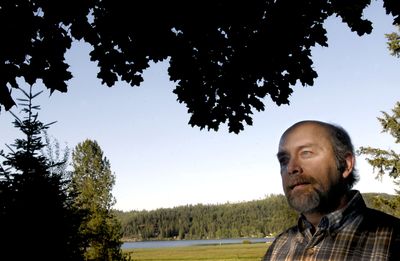A clean start for Hauser Lake homeowners
Lake-A-Syst booklet aims at educating property owners

A roll-out event promoting the new booklet, “A Property Owner’s Guide to Protecting and Improving the Water Quality of Hauser Lake, Lake-A-Syst,” is scheduled for July 26, from 11 a.m. until 2 p.m. at the park on the lake’s south shore.
The Lions Club will provide a barbecue lunch for $5 and bluegrass bands will provide music. The public is invited to attend.
Representatives from the Idaho Department of Environmental Quality, Kootenai Shoshone Soil and Water Conservation District, Spokane County Conservation District, Idaho Department of Lands, and the Hauser Lake Watershed Coalition will be on hand to answer questions and give advice.
Lake-A-Syst stands for Lakeshore Assessment System. Since the watershed has seen increased development in the last 20 years, “Keeping Hauser Lake Clean” has been the working motto for the coalition, according to President John Wallis.
“If you live in the Hauser Lake watershed, you have a special responsibility to prevent pollution from entering streams, groundwater and the lake,” says Wallis.
If you have a lawn or garden and use phosphorus or nitrogen fertilizer; if you are adding on or building a new house; if you are burning waste or brush pile; and if you perform routine vehicle maintenance – chances are you are contributing to pollution without knowing it.
“It is vitally important that property owners practice BMPs (best management practices),” says Wallis.
Wallis, who has degrees in biology and geology and is a CACI Inc. contractor, says BMPs are actions that property owners can take to reduce their impact on the environment. BMPs prevent water pollution and contamination, improve water quality, and enhance property values.
The reader-friendly guide includes a resource directory, glossary and suggestions for further reading in the appendix, and was modified from Pend Oreille’s Lake-A-Syst program. Funding for the printing of the guide was provided by the city of Hauser.
It also includes chapters on stormwater runoff; lawn and garden management; safe drinking water supply; household wastewater treatment; household hazardous waste; landscape and new construction assessment; access and driveway runoffs; forest lot, pasture, and riparian management.
The end of every chapter has assessment worksheets which help the reader identify potential environmental risks, and an action checklist to help with target dates for actions to reduce those risks.
“We want to provide landowners with tools to implement better land management practices,” Wallis said.
One of the leading causes of the proliferation of Eurasian milfoil is excessive nutrient input, like phosphorus and nitrogen from fertilizers.
The HLWC has been instrumental in helping to prevent the spread of Eurasian milfoil by installing Idaho’s first rinse station in May 2007, but it is crucial that boaters take the time to inspect and rinse their watercraft before launching into Hauser Lake.
When properly utilized by boaters, the rinse station will help prevent the infestation of many kinds of invasive species like the milfoil. Hauser Lake is currently free of any milfoil, according to Wallis.
Hauser Lake Watershed Coalition volunteers are going door-to-door to distribute the Lake-A-Syst booklets. Plans are also being made to hold a monthly series of workshops to discuss specific information from the booklet chapter by chapter.
“The lake is a veil of beauty but that doesn’t mean it is healthy,” says Wallis. “We need everyone to do their part to help keep the lake healthy.”
For more information about Lake-A-Syst contact Wallis at 777-6967.